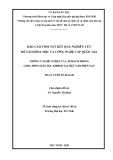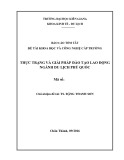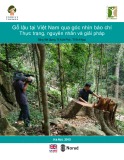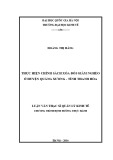
ORIGINAL RESEARCH Open Access
Air ambulance services in the Arctic 1999-2009:
a Norwegian study
Jan Norum
1,2,3*
, Trond M Elsbak
3
Abstract
Background: Air ambulance services in the Arctic have to deal with remote locations, long distances, rough
weather conditions and seasonable darkness. Despite these challenges, the people living in the area expect a high
quality of specialist health care.
Aims: The objective of this study was to analyse the air ambulance operations performed in the Norwegian Arctic
and study variations in diagnoses and flight patterns around the year.
Methods: A retrospective analysis. All air ambulance operations performed during the time 1999 –2009 period
were analysed. The subjects were patients transported and flights performed. The primary outcome measures were
patients’diagnoses and task patterns around the year.
Results: A total of 345 patients were transported and 321 flights performed. Coronary heart and vascular disease,
bone fractures and infections were the most common diagnoses. Most patients (85%) had NACA score 3 or 4. Half
of all fractures occurred in April and August. Most patients were males (66%), and one fourth was not Norwegian.
The median flying time (one way) was 3 h 33 m. Ten percent of the flights were delayed, and only 14% were
performed between midnight and 8.00 AM. The period April to August was the busiest one (58% of operations).
Conclusions: Norway has run a safe air ambulance service in the Arctic for the last 11 years. In the future more
shipping and polar adventure operations may influence the need for air ambulances, especially during summer
and autumn.
Introduction
The Northern Norway Regional Health Authority
(NNRHA) trust is responsible for the specialist health
care service and all patient transportations in northern
Norway. This includes the Norwegian Arctic areas
(Svalbard, Bear Island, Hopen and Jan Mayen). Svalbard
is a group of islands reaching up to the 80th degree
northern latitude and covers an area of 61,020 km
2
. The
land area constitutes 16% of Norway. The largest island
is Spitsbergen, and its municipalities are Lonyearbyen,
Barentsburg, Svea, Hornsund and Ny-Ålesund. The
main airport is located at Longyearbyen, but there is
also a minor one at Svea. The main industries on the
island are coal mines, tourism, education, research and
satellite services. According to data from Statistics
Norway (www.ssb.no), as of January 2009 there were a
total of 2,570 inhabitants (2,085 Norwegians, 470
Russians and 10 Poles) on the island. There is a rich
fishing area in the Svalbard zone, and fishermen from
various nations such as Great Britain, Germany, Spain,
Portugal, Russia, Iceland, the Faroe Islands and Norway
fish in the area.
Whereas people living in the Arctic experience sea-
sonable darkness and polar nights, the summer is light.
For example, Longyearbyen experiences 4 months of
seasonable darkness (no sun; 7 October –8March),
including 2 months (14 November –30 January) with
complete darkness (“polar night”). “In compensation”,
there are 4 months of midnight sun during the summer
(20 April –23 August).
The Norwegian health care service in the region is
provided by a small hospital unit in Longyearbyen. The
unit is run by the University Hospital of North Norway
(UNN) trust and is staffed with three medical doctors
(one surgeon and two general practitioners). According
to standard procedure, at least one doctor stays on the
* Correspondence: jan.norum@helse-nord.no
1
Department of Clinical Medicine, Faculty of Health Sciences, University of
Tromsø, N-9037 Tromsø, Norway.
Full list of author information is available at the end of the article
Norum and Elsbak International Journal of Emergency Medicine 2011, 4:1
http://www.intjem.com/content/4/1/1
© 2011 Norum and Elsbak. This is an Open Access article distributed under the terms of the Creative Commons Attribution License
(http://creativecommons.org/licenses/by/2.0), which permits unrestricted use, distribution, and reproduction in any medium, provided
the original work is properly cited.

island at all times. Due to the limited staff, the hospital
serves as a “preparedness hospital”taking care of pri-
mary health care, casualties and emergency care. Rough
weather conditions, often presenting with strong winds,
ice, cold temperatures and seasonable darkness, intro-
duce challenges to health care in the Arctic. Long dis-
tances and almost no alternatives for landing make it
necessary to be very cautious concerning safety before
and during flights. Peoples’activities in the Arctic vary
significantly around the year. The coal mines have
reduced activity during the summer, fisheries experience
limited access to the northern regions in winter because
of enlarged polar ice coverage, cruise liners mainly oper-
ate in the area during summer, and polar adventure
activities employing dog sleds or snowmobiles mainly
take place during periods with daylight and snow
(mainly spring and autumn). Based on this knowledge,
we aimed to clarify the variations in patients’diagnoses
and flights pattern around the year
Methods
The Arctic is shown in Figure 1. Despite the remote
location, the population at Svalbard requests health care
of similar quality to that offered on the mainland. An
efficient air ambulance service is of utmost importance
to meet these expectations. To administrate the service,
the four Regional Health Authority (RHA) trusts have
together established a company named Luftambulanse
tjenesten ANS (www.luftambulanse.no). The company
registers all air ambulance activities in the LABAS data-
base, employing a specific report sheet filled out by the
medical crew (specialised nurse or medical doctor).
Furthermore, they administrate finances for the supply
of air ambulance operations. In northern Norway, the
operations have been performed by the company
Lufttrnsport AS (www.lufttransport.no). They employ
Beechcraft King Air 2002/B200 airplanes and Augusta
AW 139 helicopters. Air operations by the Norwegian
Coast Guard (NCG; employing Lynx helicopters
onboard), the Governor of Svalbard (GoS; operating
a Super Puma helicopter at Longyearbyen), the
Norwegian Air Force (NAF; operating Sea King helicop-
ters at Banak and Bodø on the Norwegian mainland)
and other nationalities’prospective air operations in the
region were not included. Due to range limitations, the
Lynx and Super Puma helicopters in the region usually
have to transport patients to Longyearbyen for treat-
ment and/or transportation to the Norwegian mainland
Figure 1 The Arctic Sea (http://benmuse.typepad.com/ben_muse/arctic/). The white cover is the Arctic ice as in September 2007. The arrows
points to Svalbard (northern end) and Tromsø (southern end).
Norum and Elsbak International Journal of Emergency Medicine 2011, 4:1
http://www.intjem.com/content/4/1/1
Page 2 of 8

is carried out by airplane. Most patients taken care of by
the Lynx or Super Puma crews are thus indirectly
included in our survey. The NAF’s Sea King helicopters
operate on the Norwegian mainland and along its coast-
line. They very rarely operate in the Arctic.
In February 2010, the LABAS database was analysed
focussing on the time period between 1 January 1999
and 31 December 2009. The primary goal was to clarify
the variations in patients’diagnosesandflightspattern
around the year. The following data were registered:
- Flight data: Date and time of start and end of task,
time spent, state of emergency (non-urgent, urgent,
emergent) according to the Norwegian Index for
Medical Emergency Assistance [1], destination (hos-
pital) and any delay of more than 15 min.
- Patient data: Sex, age, nationality, diagnosis
(according to the international classification of dis-
eases, ICD), oxygen support, intubation, analgesics
given, degree of seriousness [National Advisory
Committee on Aeronautics (NACA) scale; the scale
is shown in Table 1], intravenous administrations
and the use of vasopressor drugs.
Statistical analysis
The Microsoft Office Excel 2007, Microsoft Corp.,
Redmond, WA, was employed for the calculations and
database. Statistical Package for Social Science (SPSS)
version 16.0, SPSS Inc., Chicago, IL, was employed for
statistical analyses. Cases with an unknown value for a
particular variable were excluded from analysis involving
that variable. Statistical analyses were performed
employing descriptive statistics and bivariate correlation
analysis. All P-values are two tailed and considered sta-
tistically significant when P< 0.05.
No approval from the regional ethics committee was
necessary as no individual patient identifiable data were
accessed by the researchers.
Results
Three hundred forty-five patients and 321 flights were
identified, and incidents were most common in April,
June, July and August. Details are shown in Figure 2.
Patient and task characteristics are shown in Table 2.
Most patients (93%) were transported to the University
Hospital of North Norway (UNN) (Figure 1).
Heart and vascular disease together with bone fracture
and infections were the most frequent diagnoses and
constituted half of all cases (Table 2). One tenth of the
patients had a gynaecologic/obstetric condition. Seaso-
nal variations are shown in Figure 3. Half of all frac-
tures occurred in April and August. The male/female
ratio was 1.6 (inhabitants at Svalbard have a male/
female ratio of 1.3). Fractures were more common
among the age group 40 –60 years, but there was no
statistically significant correlation between age and frac-
tures (P= 0.833).
Concerning severity, most (85%) cases scored 3 or 4
on the NACA scale. Details are shown in Figure 4.
There was a correlation between NACA score and age
(P= 0.027). This was because heart and vascular disease
was more common among the elderly. The mean
NACA score among the heart and vascular disease
group was 4.1 versus 3.3 among the controls. Three
fourth of the cases were classified as urgent or emer-
gent, and the state of emergency was correlated to heart
and vascular disease (P= 0.020) and gynaecologic/obste-
tric causes (P= 0.000).
Most patients were transported during the daytime.
Only 50 patients were handled during periods of polar
night and 97 (28%) during the period of seasonable
darkness. Few (14%) patients were handled between
midnight and 08:00 a.m. Details are shown in Figure 5.
No increase in the number of tasks was revealed during
the study period (Figure 6). The mean time spent per
flight (one way) was 3 h 33 min (range 1 h –8h
35 min). Thirty-five transports were delayed, and the
mean delay was 36 min. The specific cause of delay was
not registered.
Discussion
Heart and vascular disease together with bone fractures
was the most frequent diagnosis. This has also been
documented by other investigators [2,3]. Gynaecologic
and obstetric causes accounted for 10% of patients. This
is because pregnant women are routinely evacuated to
the mainland for childbirth. A similar situation has been
described among Canadian Inuit residents in the
Canadian Arctic [4]. Researchers have commented that
evacuation for childbirth has deleterious social and cul-
tural effects [4]. Canadians have therefore recently
established community birthing centres in Nunavik and
Nunavut. This is not a current policy for the Norwegian
Table 1 The National Advisory Committee on Aeronautics
(NACA) scale
Score
level
Patient status
NACA 0 No injury or illness
NACA 1 Not acute life-threatening disease or injury
NACA 2 Acute intervention not necessary, further diagnostic studies
needed
NACA 3 Severe, but not life-threatening disease or injury; acute
intervention necessary
NACA 4 Development of vital (life-threatening) danger possible
NACA 5 Acute vital (life-threatening) danger
NACA 6 Acute cardiac or respiratory arrest
NACA 7 Death
Norum and Elsbak International Journal of Emergency Medicine 2011, 4:1
http://www.intjem.com/content/4/1/1
Page 3 of 8

0
10
20
30
40
50
60
Jan Feb Mar Apr May Jun Jul Aug Sep Oct Nov Dec
Months
Tasks perfrom ed
Tasks
Figure 2 The number of patients transported each month of the year.
Table 2 Overview of air ambulance operations in the Norwegian Arctic during the time period 1999 –2009
Items Subgroup Patients % Median age (yrs) Range
Patient characteristics All (n = 345)
Age 345 100 47 0-92
Sex Female 117 34 41 2-88
Male 225 65 47 1-92
Sex not registered 3 1
Nationality Not Norwegian (total) 75 22
Russian 31 9
German 8 2
Swedish 5 1
British 2 0.4
Finnish 1 0.2
Faroe Island 1 0.2
Unspecified 27 8
Task characteristics
Emergency status Non-urgent 84 24
Urgent 144 42
Emergent 117 34
Diagnosis Psychiatry 9 3 42 21-67
Infection 34 10 40 1-84
Heart and vascular disease 76 22 54 19-87
Bone fracture 71 21 48 2-80
Gynaecology/obstetrics 28* 8 29 20-40
Cancer/tumour 4 1 57 49-73
Treatment Intubation 4 1
Oxygen 204 59
Analgesics 135 39
Vasopressors 34 10
*Twenty-four of the patients were transported to give birth to their children on the mainland.
Norum and Elsbak International Journal of Emergency Medicine 2011, 4:1
http://www.intjem.com/content/4/1/1
Page 4 of 8

Arctic because of the limited number of women living
in the region, risk factors and the capabilities (no per-
manent access to a surgeon) at the local hospital unit.
The high frequency of fractures in August has also
been documented in a prior Norwegian study from the
Norwegian Coast Guard [5]. The authors argue that this
situation is caused by the fact that workers and
fishermen are less cautious when returning to work
after their summer holiday.
Inthefuture,strokepatientsmaybecomeagrowing
group among the air ambulance patients because there
will be more elderly people and new treatment guide-
lines. The role of air ambulance (helicopter) services in
the transfer of stroke patients has been illustrated by
0
10
20
30
40
50
60
Jan Feb Mar Apr May Jun Jul Aug Sep Oct Nov Dec
Patients
Months
Fractures
Vascular disease
Infections
All patients
Figure 3 The number of patients transported per month according to the main diagnostic groups (infection, vascular disease and
fracture).
0
20
40
60
80
100
120
140
160
180
200
01234567
NACA score
Number of patients
Figure 4 The NACA score distribution among the patients.
Norum and Elsbak International Journal of Emergency Medicine 2011, 4:1
http://www.intjem.com/content/4/1/1
Page 5 of 8


![Liệu pháp nội tiết trong mãn kinh: Báo cáo [Mới nhất]](https://cdn.tailieu.vn/images/document/thumbnail/2024/20240705/sanhobien01/135x160/4731720150416.jpg)























